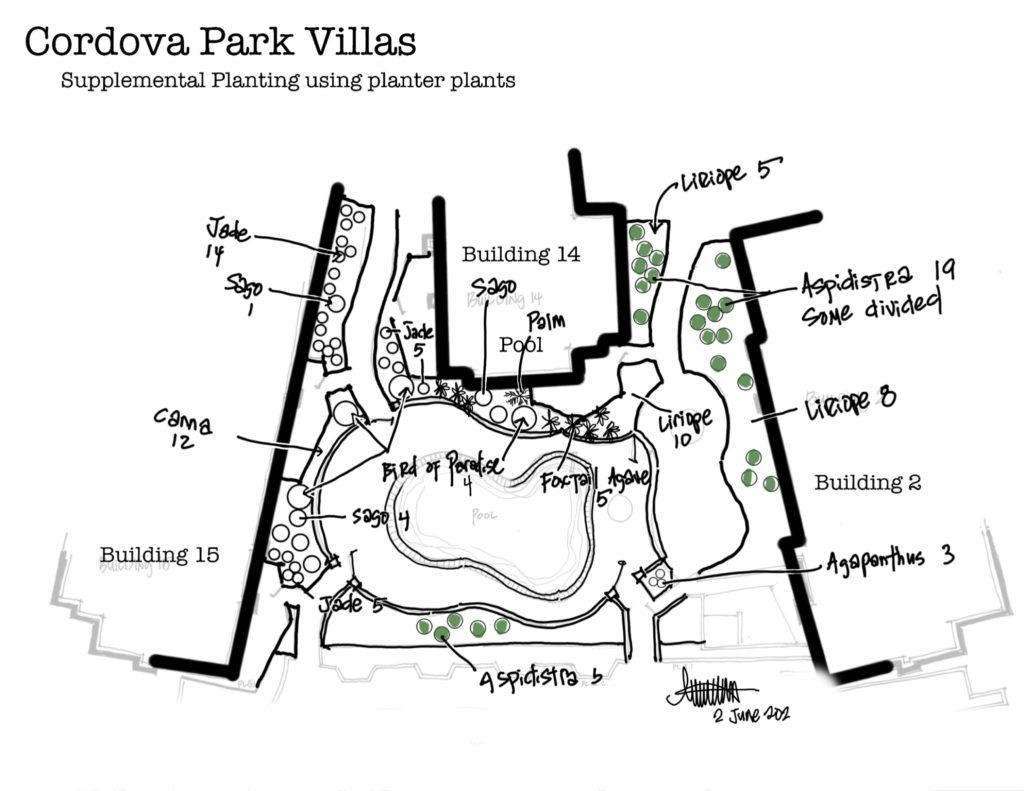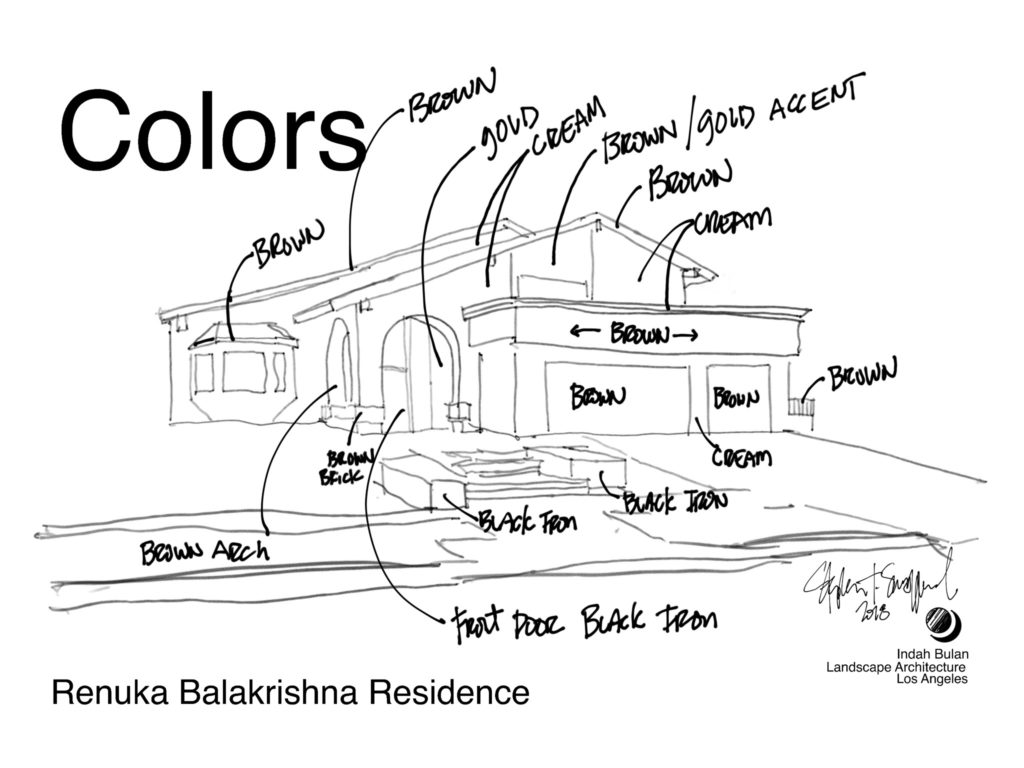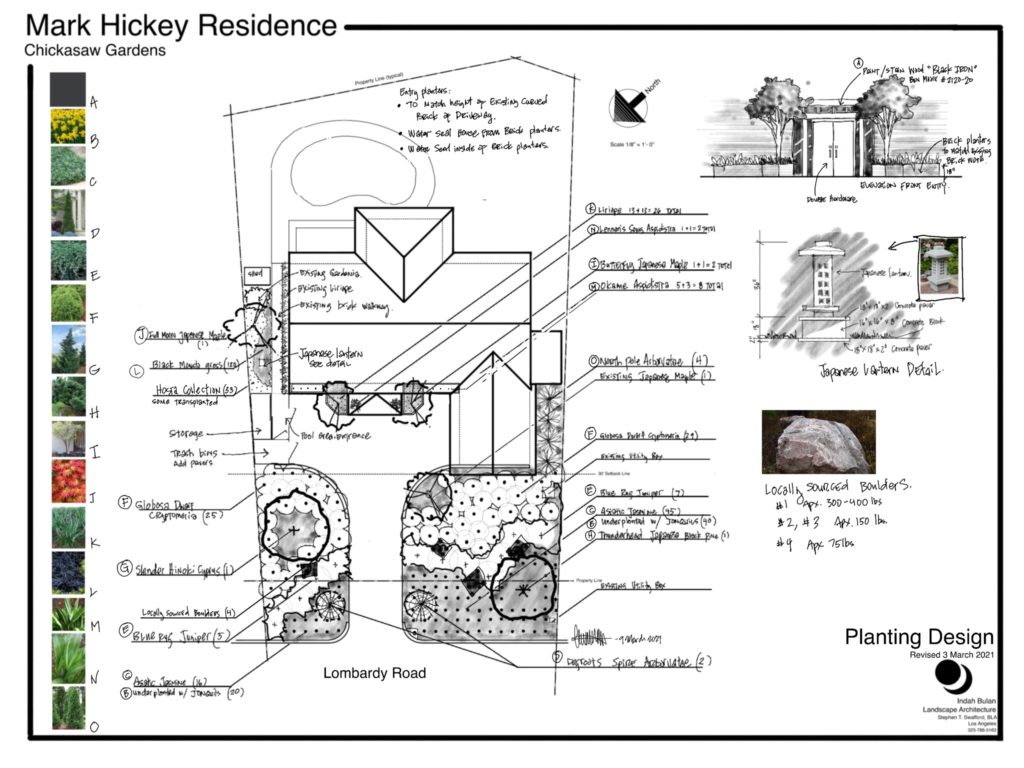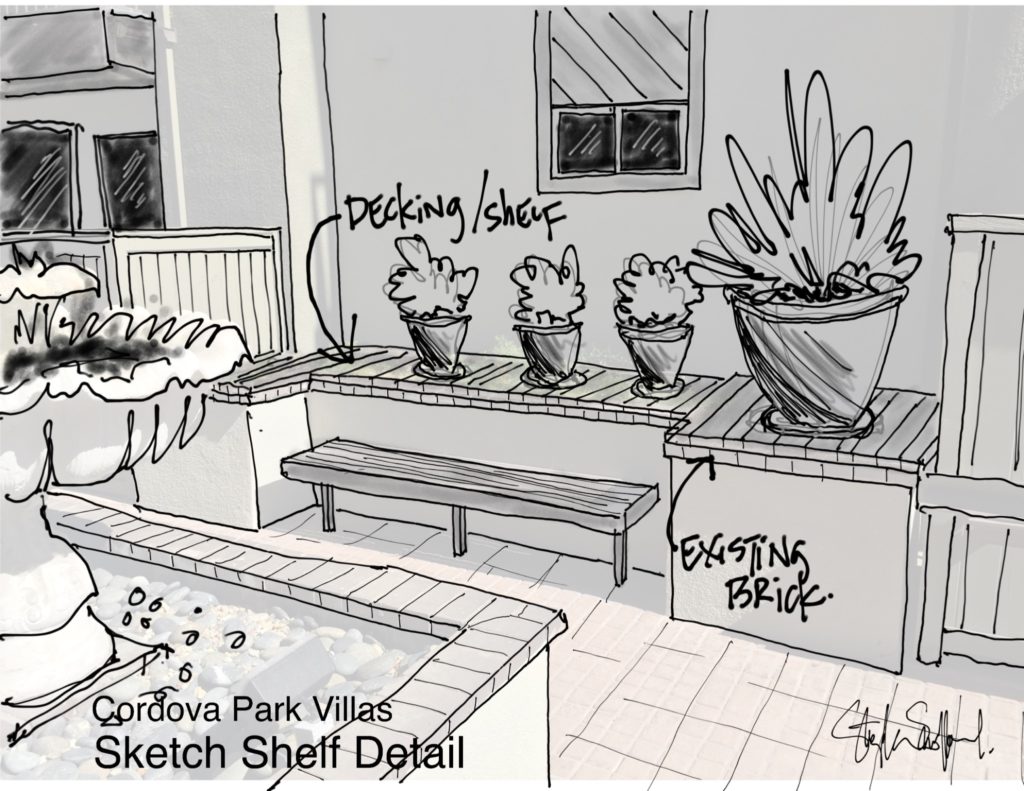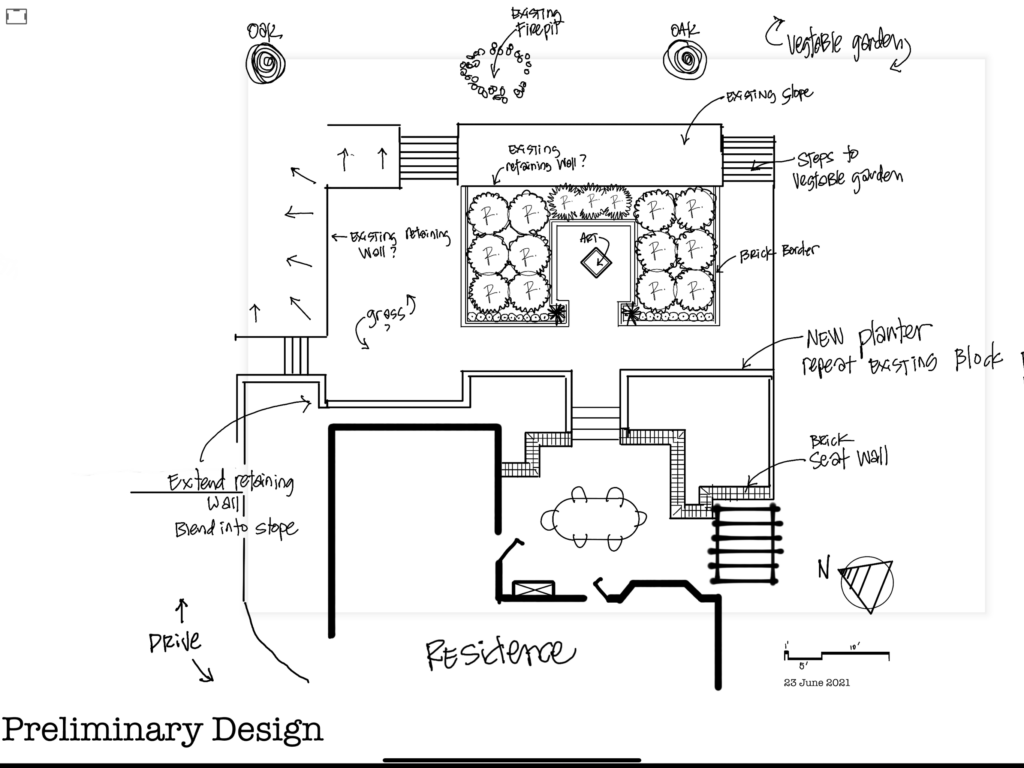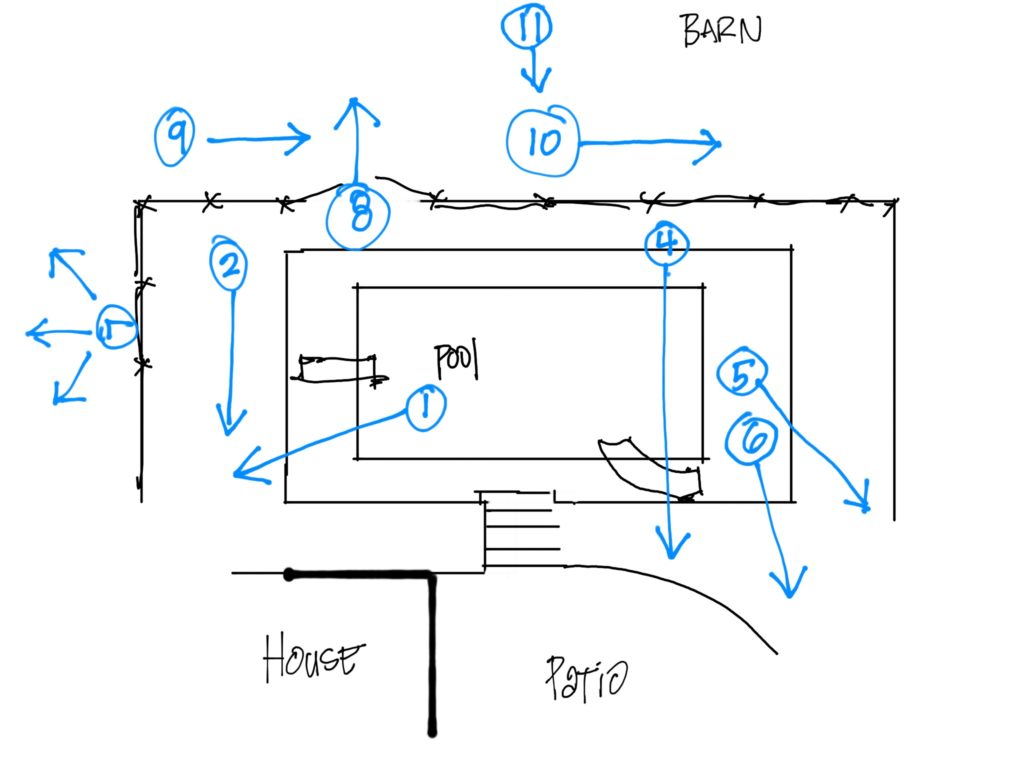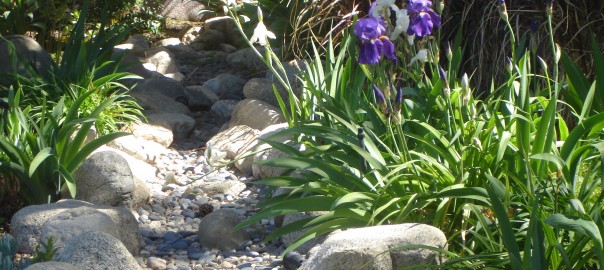During the Pandemic we had to figure out how to work without being onsite. With the magic of Google Earth and County records we have been able to continue designing landscape gardens from Los Angeles. We began by helping friends from around the country create social distancing spaces in their garden. That turned into being shared to their friends. This opened up designing for people in other States. We’ve worked on projects in Alabama, Mississippi, Tennessee, Louisiana, Wisconsin, California, and Washington. Before the Pandemic we accepted projects out of state, but we would actually go to the client in person. We were surprised at how well on-line designed worked. I think the biggest benefit has been talking more to clients about their landscape needs and dreams which has made for better projects. We turned working in isolation into talking more to our clients. It not only helped our friends and clients, but helped us. That extra time going over details made for better projects. Today, we work on full landscape plans and also small areas using video technology. Here’s how it works.
Once we are contacted, we have a video discussion about your project to see if we all get along before any commitments are made by a potential client. We learn about the area(s) that needs our help and offer a few general ideas. There is no charge for this initial video conference. After we all agree on a direction; then, we use their input to start organizing the space. One of the obvious issues is not being there in person, which normally would be essential. With technology and input from the owners, we can use Google Earth for an overview, street view, what the neighborhood looks like and the county-at-large (to look at the lay of the land). We also look at public County records to see if a property map is available online. Most Counties now have property maps on their websites. A few times we have called in a surveyor for a more accurate property map, but this depends on the scale and scope of the project and the accuracy of the County Maps. Once we have the property map and locate North, we ask for specific photos of the site. It’s not the same as being there, but it really has worked well, especially for small projects that need professional organization and ideas.
Once we are familiar with the property, we look at the climate, locate your hardiness zone, and how the Sun moves through the garden in order to create an organized preliminary design to discuss options in another video meeting. (A preliminary design is a rough layout of what you have asked for, plus our ideas in plan view.) As we discuss the ideas in the preliminary design we expect changes based on your feedback before we prepare the Master Plan. Since we’ll most likely be hiring a landscape contractor to install the garden, the amount you want to spend on the project is good to know. This amount is private between landscape architect and client. Knowing a ball park figure helps us design within your budget. The preliminary design meeting could be repeated a few times, until we are all comfortable with the plan. We’ll also want to talk about a plant palette; colors, art, and any furnishings, so this may require a few meetings. By using video conference, we are able to share our screen and show you the drawings and photos of plants in real time to make alterations to the preliminary plan in real time. We want you to feel comfortable with the every aspect of the garden before we start preparing the Master Plan. Most clients are not blue print savvy, which is normal. We take the time to orient our clients with the plans, so they can understand what is being presented.
We’ve had a few clients that want to install the landscape themselves; in this case, we create features that can be built in the DIY mode. We also provide on-going consultations during the construction. Now that the pandemic is not as critical, we could also come to you to help layout the garden. It’s a good idea to have a plan for future work, so when it’s time to do a project, we know it will fit into the greater property design; thus, some want a plan for the whole property… a guide for the years coming.
After we have agreed on the preliminary design, we refine the design based on our discussions with you. From this point, we prepare a Master Plan. A Master Plan is a series of drawn documents based on what you have requested and approved in the Preliminary Plan. One page is the general overview of the property and what will be done. All features are presented in context to one another. After the Overall Master Plan, pages are organized by planting, lighting, irrigation, hardscape, electrical needs, and details. Some will only want a planting plan and that is fine, too. It’s a flexible system based on what is required to build the landscape. The whole process could take as little as a few weeks—it’s all up to our client and how involved they want to be in this process. It’s really a modern living process that is actually kinda fun. This is all possible because of technology and the Internet. For us, it has been a terrific result of the Pandemic as it gives us an opportunity to help folks in other areas and States, before we had a few projects out of California, but most of our projects were/are here in Los Angeles. I love it!
After we present the full set of plans based on what you require, we can help you find a landscape contractor, source materials, furnishings, and plants. We’ll walk you through the whole process and be there for you during the project. We are a small business, and we offer personal attention, our designs come from our minds and experience not computer cookie cutter designs. We can make a site visit on any item that is critical and requires our advice.
We charge by the hour. Our normal fee is $175 per hour, but for online design it is $135 per hour. Typically a plan costs between $3,000 – $5,000 for a full garden, it could me more or less based on your needs.
Post Note: For those of us who like to be different, hiring someone from another area or State is probably the best way to achieve that with your garden. Typically in a city or town there is a “look” that is fine in most cases, but those us who strive to be unique, the sameness is boring. A landscape garden should reflect those who use it and not necessarily what is typically done. There are just too many wonder inspirations out there to conform to the norms just because they are normal. Though good design shines no matter what.
Here are a few of the project we have created using this new fangled technology.

